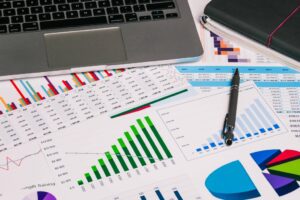
From a cash flow perspective, unearned revenues provide upfront funds that can be reinvested but must be managed carefully to meet future obligations. Clear communication with customers about payment terms and service delivery fosters trust and minimizes disputes. Interest rates on short-term loans are typically higher than long-term financing options, reflecting increased risk to lenders. For instance, a business might secure a loan with an annual percentage rate (APR) of 8% to 12%, depending on creditworthiness and lender terms. These rates can significantly impact borrowing costs, making it essential for financial managers to evaluate the necessity and cost-effectiveness of such loans. Additionally, these loans affect a company’s debt-to-equity ratio, an important metric for investors and analysts.
Is accounts payable a long-term or short-term liability?
- Current liabilities are debts that are expected to be paid within one year or within the normal operating cycle of a business.
- Common examples of liabilities include tax dues, salaries outstanding, vendor payments pending, purchases you made that are yet to be paid off, bank loans, etc.
- Keep up with Michelle’s CPA career — and ultramarathoning endeavors — on LinkedIn.
- In conclusion, liability accounts play a critical role in a company’s financial health.
- Your business balance sheet gives you a snapshot of your company’s finances and shows your assets, liabilities, and equity.
For example, a high level of debt in liability accounts can indicate financial risk, while a low level of debt may suggest financial stability. In accounting, liabilities are debts your business owes to other people and businesses. Examples of liabilities include bank loans, IOUs, promissory notes, salaries of employees, and taxes. Liabilities are on the right side of the balance sheet, list of liabilities in accounting and these accounts have a normal credit balance.
- Accounts Payable – Many companies purchase inventory on credit from vendors or supplies.
- These are often settled using current assets, such as cash, bank balances, or customer payments due shortly.
- Liability accounts are crucial in determining a company’s financial health and cash flow.
- When the company makes a payment to settle the debt, accounts payable is debited, reducing the liability.
- Contingent liabilities are potential liabilities that may arise in the future, depending on the outcome of a specific event.
- Their accessibility allows businesses to respond quickly to financial demands without disrupting operations.
How to keep track of your liabilities?

There are mainly four types of liabilities in a business; current liabilities, non-current liabilities, contingent liabilities & capital. Failure to account for accrued expenses properly can result in misstated financial statements, regulatory scrutiny, and penalties. CARES Act The Sarbanes-Oxley Act emphasizes the importance of robust internal controls to prevent inaccuracies. Liabilities in accounting are recorded as financial obligations, but these act as the most efficient resource for companies to fund capital expansion. In case of sudden requirements, a liability helps entities pay for operations and then return the finance as applicable to the lenders.

Application Management
It’s important to keep a close eye on your current liabilities to help make sure that you have enough liquidity from your current assets. This is to help guarantee that any debts or obligations your business has can get met. Long-term liabilities are debts that take longer than a year to repay, including deferred current liabilities. Contingent liabilities are potential liabilities that depend on the outcome of future events.

Liability accounts related to employees are essential for accurate financial reporting and management. By tracking these expenses, companies can ensure that they are meeting their obligations to their employees while also managing their financial resources effectively. It is important for businesses to understand their liability accounts and how they affect their financial position. By accurately recording their liabilities, businesses can make informed decisions about their financial health and plan for the future. Many companies purchase inventory from vendors or suppliers on credit. Once the vendor provides the inventory, you typically have a certain amount of time to pay the invoice (e.g., 30 days).

- This debt is recorded in the liability account as accounts payable.
- US GAAP requires some businesses to disclose or report contingent liabilities.
- A mortgage is considered a liability until you pay back the entire principal amount along with interest to the bank or to the person you borrowed it from.
- Noncurrent liabilities, or long-term liabilities, are debts that are not due within a year.
- It represents an obligation to provide the products or services in the future.
- The followingexample illustrates how liability accounts are built using the methodcalled All segments, except natural account.
When a company borrows money, it creates a liability on its balance sheet. The amount of the liability is equal to the amount of the loan or other debt. As the company makes payments on the debt, the liability account is reduced. One Accounting for Marketing Agencies of the most significant impacts of liability accounts on business operations is that they represent a source of funding for a company. By taking on liabilities, a business can acquire resources that it may not have been able to obtain otherwise.
